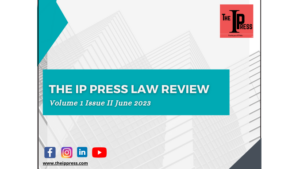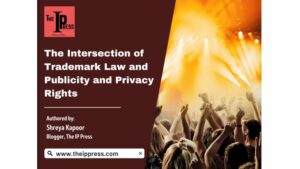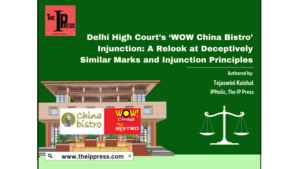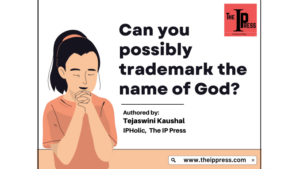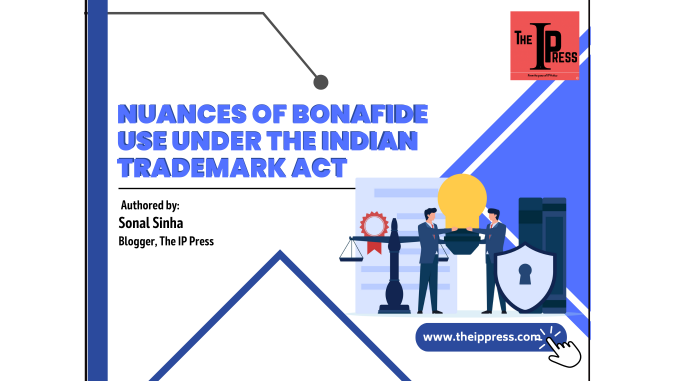

Introduction
For any business, its brand plays an essential role in its success amongst the consumer base. The brand takes on a personality of itself, and the trademark forms a central aspect of it. A trademark is a mark that comprises of names, words, symbols, or combinations that help the consumer identify the brand and its products from the rest of the competitors in the market. As per the definition of ‘Mark’ under Section 2(1)(m) of the Trade Mark Act, 1999, a name forms a part of a trademark. While trademark registration is not mandatory to get protection and enforce rights under the Act, it is always recommended and prudent thing to do. If a trademark is registered, the enforcement procedure in case of infringement becomes easier. The owner, in this case, has only to prove that they own the trademark which is registered and that the alleged infringer has used a similar mark for marketing their products. There is no requirement to prove that their brand is distinctive and that there is a reputation, nor are they required to prove that the alleged infringer harmed their brand. Whereas, in the case of unregistered trademarks, the owner has to file a legal claim for passing off and go to great lengths to establish that,
• their brand enjoyed some goodwill in the market
• the alleged infringer has misrepresented the product as those of the brand owner
• the misrepresentation has caused damage to the owner
Once a trademark is registered, the mark’s owner has the exclusive rights to use the mark in relation to the class of goods and services for which it is registered. This exclusive right is conferred upon the owner via Section 28 of the Trademark Act, 1999. However, it must be noted that Section 28(1) of the Act opens with the phrase, “subject to the provisions”. This indicates that the registered proprietor’s rights are not absolute but rather subject to other provisions given in the Act. Further, Section 27(2) of the Act also states that “nothing in this Act shall be deemed to affect the right of action against any person for passing off the goods as goods of another person, or the remedies in respect thereof”. Hence, a registered trademark proprietor’s rights are subject to other sections of the Act, including Section 35 of the Act, which provides an exception for bona fidelity use.
Bonafide Use
Section 35 of the Trade Mark Act provides a defense in cases of trademark infringement claims. The section provides that the owner of a registered trademark cannot interfere with the bona fide use by a person of their own name, or the name of the place of business, or that of their predecessors. Some of India’s most famous brands are running their business under trademarks, which are their family names, such as Birla, Tata, Bajaj, etc. There are numerous small scale or lesser-known brands that use the names of their founders as their marks.
In cases of claims against them, if the defendant can show that historically their personal name has been associated with their business for a long time and the use of their personal name is done legitimately. The jurisprudence behind the defence of bona fide use has been best dealt with in the observations laid down in Joseph Rodgers & Sins Ltd. v. W.N. Rodgers and Co[i], that although the law prohibits using the name of another business as one’s own in a way that it causes confusion among the consumers that there is a connection between the two, there is an exception as per the opinion of the court wherein a person must be entitled to use their own name for their business in a way that it does not cause confusion and is used honestly. However, another proposition of law states that no person is allowed to represent or mark their business as that of business of someone else. To this, there is no exception.
In Kirloskar Diesel Recon (P) Ltd. v. Kirloskar Proprietary Ltd, the Bombay High Court had held that in cases of passing off claims, the defence of the right to use personal name is not valid. When it comes to incorporated companies, the name adopted is by choice. In contrast, in cases of natural persons, the surname is not adopted by choice. In this case, the defendant was restrained from using the mark ‘KIRLOSKAR’ as a corporate name. In Goenka Institute of Education and Research v. Anjani Kumar Goenka, the Delhi High Court had held that the defence of bona fide use under Section 35 would apply only in the use of full name when used by a natural person and not by a legal entity that has the option to go with a separate name. Further, once a surname acquires distinctiveness and attains a secondary meaning in the market. The same cannot be used by another artificial person or entity.
Precious Jewels v. Varun Gems, the Supreme Court allowed using one’s own name as a mark. In this case, the plaintiff and defendant both belonged to the same family, consequently sharing the same surname of ‘Rakyan’. Both parties were using the surname in their business; the defendants were trading under the name of ‘Neena and Ravi Rakyan’, and the plaintiffs were trading under the name ‘Rakyan’s Fine Jewellery’. On a suit for restraining the defendants filed by the plaintiff, the court, while dismissing the same, held that Section 35 of the Act allows anyone to run their business under their own name in an honest and bona fide manner.
Personality Rights vs Bonafide Use
One of the more interesting aspects of Section 35 is the intersection between the defence of bona fide use and the personality rights of celebrities. Personality rights basically refer to celebrities’ rights to use their personality in a way that they are in control of how their personal image is being portrayed, used, or exploited in the public eye. Gautam Gambhir v. D.A.P. and Co and Ors is one such interesting case. A suit was filed by the famous cricketer Gautam Gambhir against the defendant entity for using “By Gautam Gambhir” as a part of their mark in restaurant business. The defendant had numerous restaurants with names such as ‘Blu Wavs’, ‘Play Reloaded’, ‘Ghungroo’, and ‘Hawalat’ accompanied by the phrase “By Gautam Gambhir”. The cricketer claimed that such use by the defendant caused confusion and that there is an association between the cricketer and the restaurants. The defendants used the defense of bona fide use under Section 35 of the Trademark Act, 1999, stating that the owner of the restaurant is also named Gautam Gambhir. He, along with his chain of restaurants, had gained fame on his own. The court, siding with this defence, dismissed the cricketer’s claims and held that the defendant had every right to use his own name as per Section 35 of the Trade Mark Act.
Contracts vs Bonafide Use
Another interesting aspect of the bona fide defence was highlighted in the case of Anil Rathi v. Shri Sharma Steeltech recently, wherein the usage of common family names as trademarks in cases of existence of family agreements regarding the use of the mark was dealt with by the court. As per the facts, both parties were engaged in the manufacturing of steel products. The parties were a part of the Rathi Foundation, the registered proprietor of the mark ‘RATHI’. The Rathi Foundation regulated the use of the mark among the members of the Rathi family via an MOU and Trust Deed. The plaintiff had filed a suit of infringement against the defendant as the latter had granted a license for the use of the mark to third parties. The plaintiff had filed the suit based on Section 28 of the Trade Mark Act, which deals with the registered proprietor’s statutory rights, which is the trust, to use the mark exclusively and the defendant’s contravention against the MOU and the Trust Deed. On the other hand, the defendants invoked the defence of bona fide use under Section 35, as Rathi was also their surname.
The Delhi High Court held that the issuance of the license by the defendant for the usage of the mark amounted to infringement of the agreements made via the MOU and the Trust Deed, as these agreements only granted the right to use the mark and not to issue the same to a third party via license. Further, the court also dismissed the defendant’s defence under Section 35 by clearing the stance that the bona fide use under the section is restricted to personal use and not to the extent of granting a license over it or to be used by artificial entities. The use of the mark by the defendant by way of licensing was not in a bona fide manner, and the defence was denied. Further, another ground for dismissal of the defence by the court was that Section 35 could not be invoked
Anil Rathi’s judgment laid down in September 2020 has been a significant leap towards clarifying the legal stance on the concept of bona fide use given under Section 35 of the Trade Mark Act, 1999. Summing up the precedents laid down by the judicial pronouncements over the years on this topic, the key points to be considered before applying the bona fide defence under Section 35 are,
- The mark must either be of a person’s own name, the name of the place of business, or their predecessors.
- The mark consisting of the name must be historically associated with the person’s business for a long time.
- The mark can only be used by natural persons and not by artificial entities.
- The mark must not be used so that it contravenes any agreement with respect to its use.
Conclusion
As mentioned earlier, while numerous benefits accrue from the registration of a trademark, the Act also strikes an appropriate balance between the rights of the proprietor and the rights of a bona fide user. Further, the Indian courts have also recognized the rights of an honest user, who is genuinely cashing on their own name and shielding such users from dishonest attempts by registered proprietors to monopolize their mark and unfair domination.
[i] [1924] 41 R.P.C. 277
- SEO Powered Content & PR Distribution. Get Amplified Today.
- Platoblockchain. Web3 Metaverse Intelligence. Knowledge Amplified. Access Here.
- Source: https://www.theippress.com/2022/11/25/nuances-of-bonafide-use-under-the-indian-trademark-act/
- 1
- 1999
- 2020
- 28
- a
- Absolute
- Acquires
- Act
- Action
- adopted
- affect
- against
- Agreement
- agreements
- alleged
- allows
- Although
- always
- among
- amongst
- and
- Another
- anyone
- Apply
- Applying
- appropriate
- artificial
- aspect
- aspects
- associated
- Association
- Attempts
- Balance
- base
- based
- Basically
- becomes
- before
- behind
- being
- benefits
- BEST
- between
- Blog
- both parties
- brand
- brands
- business
- cannot
- case
- cases
- Cause
- caused
- causes
- celebrities
- central
- chain
- choice
- claim
- claimed
- claims
- class
- Clearing
- combinations
- Common
- Companies
- competitors
- concept
- conferred
- confusion
- connection
- Consequently
- considered
- Consisting
- consumer
- Consumers
- contrast
- control
- Corporate
- could
- Court
- Courts
- Deals
- defence
- defendants
- Defense
- Delhi
- diesel
- dishonest
- down
- Earlier
- easier
- Education
- either
- enforcement
- engaged
- entities
- entity
- essential
- establish
- etc
- Ether (ETH)
- exception
- Exclusive
- exclusively
- exploited
- eye
- family
- famous
- fidelity
- File
- fine
- forms
- Foundation
- founders
- from
- full
- further
- get
- given
- Go
- goods
- Goodwill
- granted
- granting
- great
- Ground
- Held
- help
- High
- Highlighted
- historically
- How
- However
- HTTPS
- identify
- image
- in
- Including
- Incorporated
- Indian
- indicates
- infringement
- Institute
- interesting
- interfere
- intersection
- issuance
- issue
- IT
- itself
- Key
- Law
- Legal
- lesser-known
- License
- Licensing
- Long
- long time
- Ltd
- made
- mandatory
- manner
- manufacturing
- mark
- Mark’s
- Market
- Marketing
- meaning
- Members
- mentioned
- more
- most
- MOU
- name
- Named
- names
- Natural
- noted
- numerous
- numerous benefits
- ONE
- opens
- Opinion
- Option
- Other
- own
- owner
- part
- parties
- party
- Passing
- person
- personal
- Personality
- persons
- Place
- plato
- Plato Data Intelligence
- PlatoData
- points
- portrayed
- Product
- Products
- proposition
- proprietary
- protection
- Prove
- provides
- public
- recently
- recognized
- recommended
- regarding
- registered
- Registration
- regulated
- relation
- represent
- reputation
- required
- requirement
- research
- REST
- restaurant
- Restaurants
- restricted
- rights
- Role
- Run
- running
- same
- Scale
- secondary
- Section
- sections
- September
- Services
- sharing
- Sharma
- show
- significant
- similar
- small
- So
- some
- Someone
- States
- steel
- Strikes
- subject
- success
- such
- Suit
- Supreme
- Supreme Court
- takes
- The
- the Law
- their
- thing
- Third
- third parties
- time
- to
- topic
- towards
- trade
- trademark
- trademarks
- Trading
- Trust
- under
- unregistered
- Usage
- use
- User
- users
- via
- W
- which
- while
- WHO
- words
- would
- years
- zephyrnet

